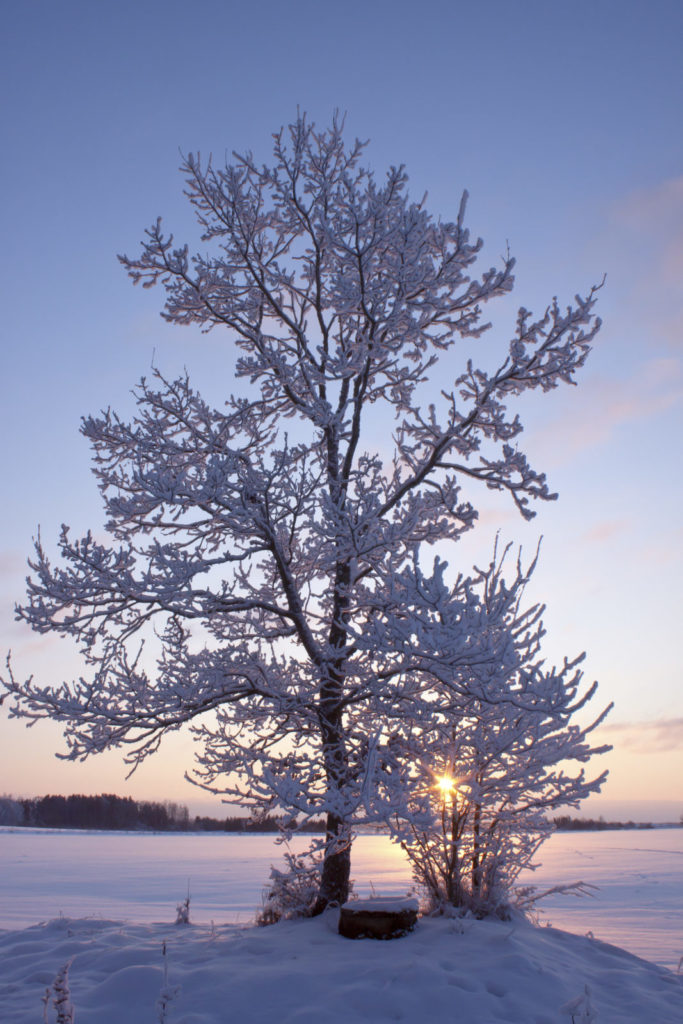Trees, much like humans, are aware that winter is coming. And also, much like humans, they prepare for it. Trees survive the winter with help from a number of things. The physical construction of the tree along with some pretty spectacular mechanisms internally allow trees to lay dormant during the winter. Even when trees are not able to absorb the water and nutrients they need from the soil and air; they are able to persist and maintain through several biological processes.

Anatomy
External
On the outside of the tree is the bark. We’re all familiar with it and know that it helps protect the tree from harsh environmental factors, bugs, and other animals. The tree’s bark acts as insulation for the tree. Trees carry water throughout its roots, stem, and branches. when water freezes, it becomes crystalline. The sharp and jagged edges of the ice crystals within the tree would essentially tear the soft tissue of the tree and destroy it from the inside out. The bark keeps ice crystals from forming inside the tree and destroying it.
Internal
Helping the bark are molecules called ice nucleators. In the natural world, ice must form around something – it cannot simply form in thin air – so it usually attaches to something like a speck of dust. Trees have, in a way, gamed the system. These ice nucleators act as decoys for ice crystals. Their sole purpose is to attract the ice crystals and carry them through the tree, attracting more water along the way. As the tree’s cells release the water the ice nucleators that are traveling between the cells carry the ice crystals away. The lower water content within the trees cells means a higher sugar content. This lowers the freezing point of the trees cells themselves. That means the temperature must be lower than its natural freezing point. In a way, this acts as the tree’s internal antifreeze.
How Do Leaves Come Back in the Spring?
Not only do trees survive the winter, they use it to prepare to flourish in spring. Trees take queues from two stimuli: day length and temperature. Just like how humans have melatonin, and those levels raise at night when the sun goes down, trees have mechanisms that send queues to tell it when the nights are getting longer, and the days are getting shorter. The same mechanism that tells the tree to start forming in abscission zone also tells the tree to start growing its leaves back. During the winter, you can see tiny hard buds on the branches of trees. Underneath the hard exterior, soft tissue is developing, waiting to emerge when temperatures rise and the days lengthen. The soft tissue is all the leaves and flowers that will grow from that point on the tree for the whole next season.
Nature operates in mysterious ways sometimes. Luckily for us we have science to help us explain what might not be so obvious. At Nelson Tree Specialist, we are always in awe of the strength and persistence of Mother Nature. If you have questions about trees in your yard and why they do what they do, get in touch with us. Our Certified Arborists are trained in tree health care and love talking with you about your landscaping.
